Chemical biology studies on norrisolide
- PMID: 20189813
- PMCID: PMC2838712
- DOI: 10.1016/j.bmc.2010.02.007
Chemical biology studies on norrisolide
Abstract
The cellular activity of norrisolide (7), a novel Golgi-vesiculating agent, was dissected as function of its chemical structure. This natural product induces irreversible vesiculation of the Golgi membranes and blocks protein transport at the level of the Golgi. The Golgi localization and fragmentation effects of 7 depend on the presence of the perhydroindane core, while the irreversibility of fragmentation depends on the acetyl group of 7. We show that fluorescent derivatives of norrisolide are able to localize to the Golgi apparatus and represent important tools for the study of the Golgi structure and function.
Copyright 2010 Elsevier Ltd. All rights reserved.
Figures
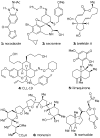
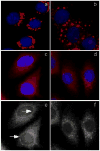

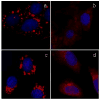
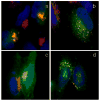





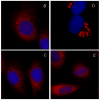



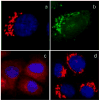
Similar articles
-
Fragmentation of Golgi membranes by norrisolide and designed analogues.Bioorg Med Chem Lett. 2004 Oct 18;14(20):5035-9. doi: 10.1016/j.bmcl.2004.08.003. Bioorg Med Chem Lett. 2004. PMID: 15380194
-
Chemical analysis of norrisolide-induced Golgi vesiculation.J Am Chem Soc. 2006 Apr 5;128(13):4190-1. doi: 10.1021/ja058259a. J Am Chem Soc. 2006. PMID: 16568969
-
Trifunctional norrisolide probes for the study of Golgi vesiculation.Bioorg Med Chem Lett. 2007 Jan 15;17(2):320-5. doi: 10.1016/j.bmcl.2006.10.101. Epub 2006 Nov 6. Bioorg Med Chem Lett. 2007. PMID: 17110104 Free PMC article.
-
Role of Intracellular Transport in the Centriole-Dependent Formation of Golgi Ribbon.Results Probl Cell Differ. 2019;67:49-79. doi: 10.1007/978-3-030-23173-6_4. Results Probl Cell Differ. 2019. PMID: 31435792 Review.
-
Membrane traffic. Is the Golgi complex?Curr Biol. 1995 Sep 1;5(9):980-1. doi: 10.1016/s0960-9822(95)00193-x. Curr Biol. 1995. PMID: 8542288 Review.
Cited by
-
Divergent synthesis and chemical reactivity of bicyclic lactone fragments of complex rearranged spongian diterpenes.J Am Chem Soc. 2011 Nov 2;133(43):17494-503. doi: 10.1021/ja207727h. Epub 2011 Oct 11. J Am Chem Soc. 2011. PMID: 21988207 Free PMC article.
-
Catalytic Hydroxycyclopropanol Ring-Opening Carbonylative Lactonization to Fused Bicyclic Lactones.J Am Chem Soc. 2020 Aug 12;142(32):13677-13682. doi: 10.1021/jacs.0c06179. Epub 2020 Jul 27. J Am Chem Soc. 2020. PMID: 32687339 Free PMC article.
References
-
-
For selected reviews on the secretory pathway see: Pelham HR. Cell Struct Funct. 1996;5:413–419.Rothman JE, Orci L. Nature. 1992;355:409–415.Pelham HR, Munro S. Cell. 1993;75:603–605.Corda D, Hidalgo Carcedo C, Bonazzi M, Luini A, Spanò S. Cell Mol Life Sci. 2002;59:1819–1832.Luini A, Mironov AA, De Matteis MA, Griffiths G. Med Secoli. 2007;19:29–54.Lowe M, Nakamura N, Warren G. Trends Cell Biol. 1998;8:40–44.
-
-
-
For selected reports on this topic see: Fahy JV. Chest. 2002;122:320S–326S.Suchy SF, Olivos-Glander IM, Nussabaum RL. Hum Mol Genet. 1995;4:2245–2250.Cheng SH, Gregory RJ, Marshall J, Paul S, Souza DW, White GA, O'Riordan CR, Smith AE. Cell. 1990;63:827–834.
-
-
-
For selected reports on this topic see: Spooner RA, Smith DC, Easton AJ, Roberts LM, Lord JM. Virol J. 2006;3:26.Sandvig K, van Deurs B. Annu Rev Cell Dev Biol. 2002;18:1–24.Ludwig JW, Richards ML. Curr Top Med Chem. 2006;6:165–178.
-
-
-
For selected reports on this topic see: Roth J. Chem Rev. 2002;102:285–303.Arnold SM, Kaufman RJ. New Compreh Biochem. 2003;38:411–432.van Vliet C, Thomas EC, Merino-Trigo A, Teasdale RD, Gleeson PA. Progr Biophys & Mol Biol. 2003;83:1–45.Schulein R. Rev Physiol Biochem & Pharmacol. 2004;151:45–91.Sifers RN. Science. 2003;299:1330–1331.
-
-
-
For selected reports on this topic see: Warren G, Malhotra V. Curr Opin Cell Biol. 1998;10:493–498.Bard F, Malhotra V. Annu Rev Cell Dev Biol. 2006;22:439–455.
-
Publication types
MeSH terms
Substances
Grants and funding
LinkOut - more resources
Full Text Sources

